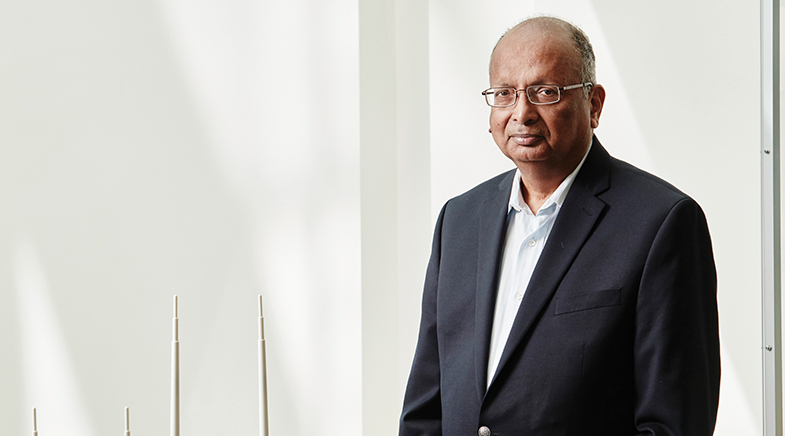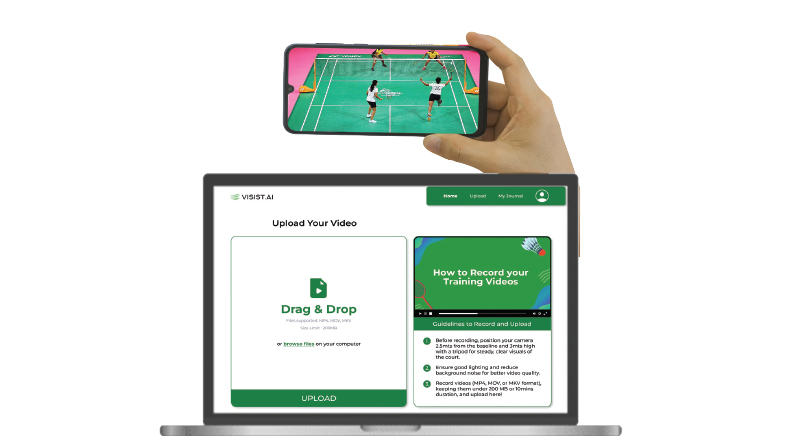'Make the 5G system from India world-class'
-
- from Shaastra :: vol 01 issue 06 :: Nov - Dec 2022

Prof Arogyaswami Paulraj charts the way ahead for India to make a mark in the global wireless industry
An Emeritus Professor at Stanford University, Prof Arogyaswami Paulraj is a veteran wireless communications researcher and systems developer. A former Indian Navy Officer and defence scientist, Paulraj is a pioneer of MIMO (Multiple Input Multiple Output) wireless communications, a breakthrough technology that enables improved broadband wireless performance. He has also been actively engaged in India’s efforts to develop indigenous telecommunication technologies for years. Excerpts from an interview, in which he lays out the roadmap for India to build a world-class wireless industry:
Where does India stand in the universe of wireless technology?
India has yet to build a wireless technology industry and add significant local value. We have an excellent cellular operator (services) industry… but we must also develop commercial cellular equipment industry. The global wireless industry’s annual revenue, including devices and infrastructure equipment, is probably $700 billion. Its supply chain is highly diverse and intertwined across countries and companies.
Whatever we build in India will also rely on this global supply chain and our technology must be globally competitive, so that we can sell globally. Built in India for the world. There is an effort now within the Tata Group to build 4G infrastructure equipment for BSNL. The 5G academic prototype developed at the IITs is a skill-building effort, which needs to be converted into a commercial product. I hope the Tatas and Jio will also enter 5G development. This is a significant effort requiring large financial outlays and time.
How significant are the 5Gi standards pushed through by India?
When 5G standards were developed, little attention was paid to serving rural areas, where vehicles are often at low speeds. India pushed that requirement forward, enabled by an efficient modulation technique. It took a lot of effort by many Indian researchers and agencies. ITU (International Telecommunication Union) accepted this rural use case as part of the 5G family and called it 5Gi. The 3GPP (3rd Generation Partnership Project), which standardises mobile technology, has also agreed to include this addition. 5Gi is a very nice win for India in the standards arena. But India must leverage that win to build an equipment industry.
India’s patent coverage in mobile standards body is still extremely small. IIT Madras Professors Ashok Jhunjhunwala and Bhaskar Ramamurthi started CEWiT (Centre of Excellence in Wireless Technology) several years ago in Chennai. CEWiT’s goal is to develop IP and build a patent portfolio to push into global standards. We had some success in WiMAX (Worldwide Interoperability for Microwave Access) standard, limited success in 4G, but now (there are) many opportunities in 5G. India needs to expand this IP effort significantly.
What was China’s road to wireless technology?
China developed TD-SCDMA (Time Division-Synchronous Code Division Multiple Access) technology, and it was standardised as 3G technology by ITU in 1998. China then used its market power to get European companies to invest heavily in this technology. The overall development effort in China expanded to thousands of engineers. TD-SCDMA networks were finally deployed in China to reach about 10 million subscribers by 2014. By that time, TD-SCDMA was a rather outdated technology, but their reasoning was: ‘It may be outdated, but it is ours.’ The learning from developing commercial TD-SCDMA systems helped create ZTE and Huawei and made them very strong in 4G and now 5G.
The Chinese journey in wireless started with building working prototype systems. An early prototype of TD-SCDMA was built in UT Austin (the University of Texas at Austin) by Prof G. Xu (one of my former Stanford PhD students of Chinese origin), helped by a dozen engineers sent by the Chinese government. That work was later moved to China to become the backbone of China’s wireless industry. The Chinese mindset of building things and not stopping at writing papers or patents has served them well.
Other factors in favour of China are that their government has been very focused on technology development for decades, and their bureaucrats who deal with promoting wireless industry have a good grasp of both technology and business aspects, and often have wireless industry experience.
PAST ISSUES - Free to Read


Have a
story idea?
Tell us.
Do you have a recent research paper or an idea for a science/technology-themed article that you'd like to tell us about?
GET IN TOUCH














